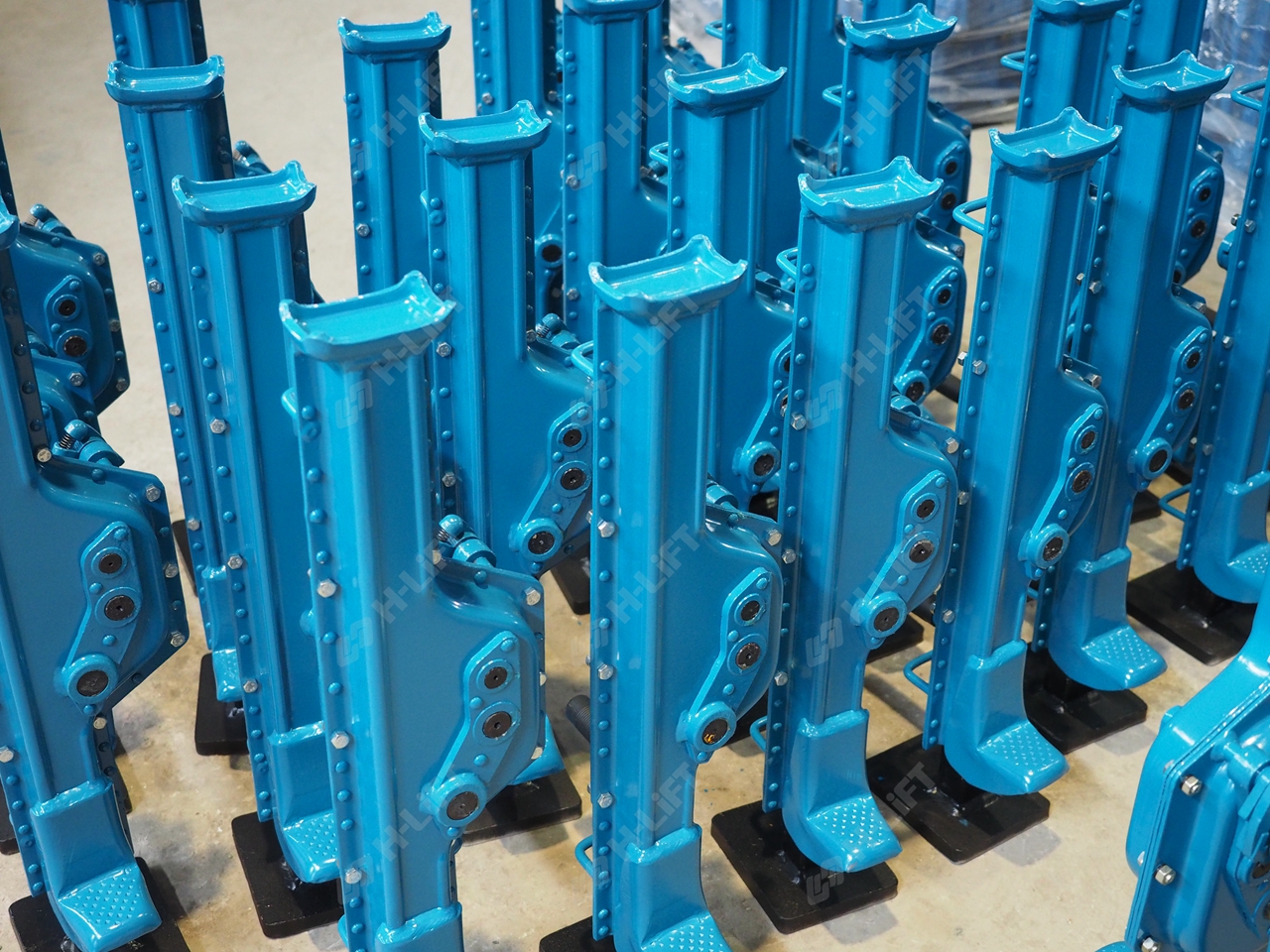A mechanical rack jack, also known as a rack-and-pinion jack or simply a rack jack, is a type of lifting device used to raise heavy loads by means of a mechanical gear mechanism. It consists of a gear rack (a toothed bar) and a pinion (a gear wheel) that engages with the rack. When you turn the handle or crank attached to the pinion, it moves along the rack, creating linear motion, which is used to lift or lower objects.
Here are some key features and applications of mechanical rack jacks:
- Manual Operation: Rack jacks are typically manually operated, and they rely on the physical effort of the operator to turn the handle or crank. Some designs may also incorporate a worm gear mechanism for easier operation.
- Precise Lifting: These jacks are known for their precise and controlled lifting capabilities. The operator can raise or lower the load incrementally, making them suitable for applications that require accuracy.
- Safety Features: Many rack jacks include safety features such as a locking mechanism to prevent unintended lowering of the load and to ensure stability during lifting.
- Common Uses: Mechanical rack jacks are used in various applications, including lifting and positioning heavy machinery, adjusting the height of work platforms or stages, and in construction and material handling tasks where controlled lifting is essential.
- Weight Capacity: The weight capacity of a rack jack varies depending on its design and construction. They can handle a wide range of loads, from a few hundred pounds to several tons.
Rack jacks are often used in situations where hydraulic or pneumatic jacks are not practical or available, and where precise control over the lifting process is needed. They provide a reliable and straightforward means of lifting heavy objects in a controlled manner, making them a valuable tool in various industrial and construction settings.



